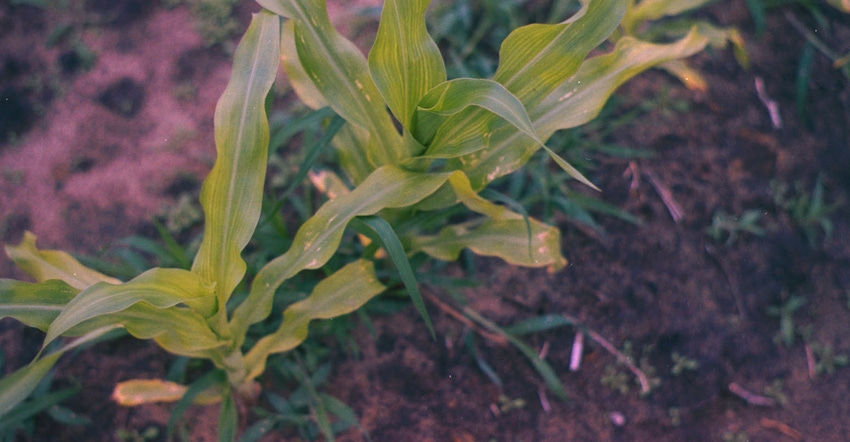January 4, 2018

By Jeff Nagel
Fewer emissions from power plants may be good for humans, but it could impact crops in a negative way. Elemental sulfur, which was once considered adequate in the air and free to crops, including corn, may no longer be present in adequate amounts for top yields. It depends upon several factors.
Sulfur applications are routinely part of a nutrient program on sandy, low organic matter soils. Sulfur is mineralized from organic matter, so low organic-matter timber soils may have deficiencies. Transient deficiencies of sulfur on higher organic matter soils have even been observed in cool springs in Indiana.
Generally, once S has been identified as a nutritional concern through tissue plant analysis, it’s incorporated into the fertility program. Soil tests are not reliable for sulfur because, like nitrogen, it is mobile in the soil. A low soil test value for sulfur may not necessarily result in a response to S applied on the soil.
There are several good sources of sulfur, including dry products like ammonium sulfate with an analysis of 21-0-0-24S, K-Mag at 0-0-22-10Mg-22S and elemental 90% sulfur. Elemental sulfur must be oxidized through a microbial process. Don’t count on elemental sulfur for early-season needs when applied in the spring.
Ammonium thiosulfate, or 12-0-0-26S, is a liquid S source that can be applied at planting in a 2-by-2-inch starter, broadcast with UAN or sidedressed with UAN. Gypsum is another sulfur source.
The choice of S source usually involves cost and the best way to incorporate logistically into a farm operation.
The addition of sulfur does add cost per acre, but if you’re using a source that contains both N and S, such as AMS or ATS, you can credit the nitrogen as part of the total N program. This usually puts sulfur cost at around an equivalent of 2 bushels of corn per acre.
Nagel is an agronomist for Ceres Solutions Cooperative, Lafayette, Ind., and an Indiana certified crop adviser. Tom J. Bechman contributed to this story.
You May Also Like




